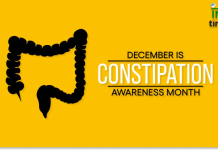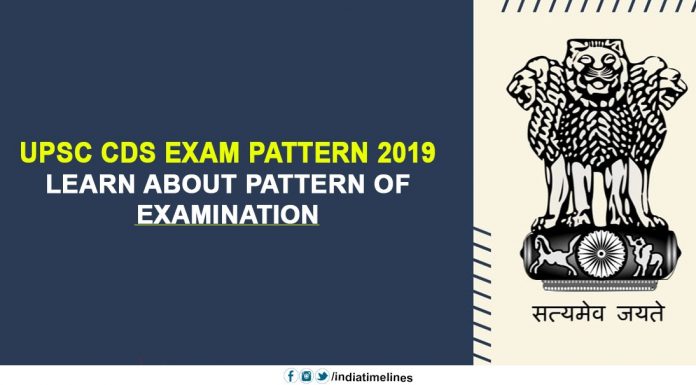
Every year on October 24, the world unites to commemorate World Polio Day. This day serves as a vital reminder of the ongoing global fight against poliomyelitis (polio), a highly infectious viral disease that primarily affects young children. Established by Rotary International, World Polio Day not only celebrates the remarkable progress made toward eradicating the disease but also calls for continued efforts to fully eliminate it. As we approach World Polio Day 2024, it’s important to reflect on the milestones reached, the challenges that remain, and the actions needed to achieve a polio-free world.
Understanding Polio: What Is Poliomyelitis?
Polio is caused by the poliovirus, which spreads from person to person, primarily through the fecal-oral route. It can invade an individual’s nervous system and, in some cases, cause permanent paralysis or even death. The disease was once a global health threat, affecting hundreds of thousands of people annually. However, the introduction of the polio vaccine in the 1950s significantly reduced the number of cases worldwide.
There are three types of poliovirus—Type 1, Type 2, and Type 3. While Type 2 and Type 3 have been eradicated, Type 1 remains a persistent threat, especially in certain regions. The World Health Organization (WHO) and other global health institutions have been working tirelessly to completely eradicate the virus.
The History of World Polio Day
World Polio Day was established in honor of Dr. Jonas Salk, who led the team that developed the first effective polio vaccine in 1955. Salk’s inactivated poliovirus vaccine (IPV) was a groundbreaking achievement that laid the foundation for the eventual global eradication efforts.
Over the years, organizations like Rotary International, the World Health Organization (WHO), the Centers for Disease Control and Prevention (CDC), and UNICEF have worked collaboratively under the Global Polio Eradication Initiative (GPEI). This effort, initiated in 1988, has reduced global polio cases by over 99%. At that time, polio was endemic in 125 countries, but as of 2024, it remains endemic in only two—Afghanistan and Pakistan.
The Global Polio Eradication Initiative (GPEI)
The Global Polio Eradication Initiative is one of the largest public health efforts in history, and its achievements over the past three decades have been extraordinary. The GPEI’s strategy combines vaccination campaigns with active surveillance and monitoring to ensure no poliovirus cases go unnoticed. This global effort has immunized billions of children and prevented over 18 million cases of paralysis since its inception.
Despite these tremendous gains, challenges remain. In regions where polio is still endemic, insecurity, political instability, and vaccine misinformation continue to hinder progress. As of 2024, the world faces the final hurdle in the eradication journey: to stop transmission of the virus in its last remaining strongholds.
Achievements in Polio Eradication
- Over 99% Reduction in Polio Cases: Since 1988, when GPEI was established, the number of polio cases has dropped by 99%, from an estimated 350,000 cases per year to less than 200 annual cases in recent years.
- Polio-Free Regions: The Americas, Europe, the Western Pacific, and Southeast Asia have all been certified as polio-free. Africa was declared free of wild poliovirus in 2020 after four years without a case.
- Innovations in Vaccine Delivery: The development and distribution of the oral polio vaccine (OPV), as well as continued innovations like the bivalent oral polio vaccine (bOPV), have helped improve immunization coverage in hard-to-reach areas.
- The Eradication of Type 2 and Type 3 Poliovirus: The last case of Type 2 poliovirus was reported in 1999, and Type 3 was declared eradicated in 2019. These are monumental steps in the global effort to rid the world of polio.
- Strong International Partnerships: GPEI has fostered unprecedented partnerships between international organizations, governments, non-profits, and local communities. This collaboration has been a driving force behind the progress in the fight against polio.
Challenges Ahead: Why Polio Is Not Yet Eradicated
While significant progress has been made, several challenges continue to hamper global eradication efforts:
- Endemic Countries: Afghanistan and Pakistan remain the last two countries where wild poliovirus transmission has not been interrupted. Ongoing conflict, insecurity, and the displacement of populations make it difficult to reach every child with the vaccine. These regions are also susceptible to vaccine resistance due to misinformation and cultural barriers.
- Vaccine-Derived Poliovirus (VDPV): In rare instances, the weakened virus in the oral polio vaccine can mutate and circulate in areas of low immunization coverage, leading to outbreaks of vaccine-derived poliovirus. These cases, while few, highlight the need for high immunization rates and better health infrastructure.
- Health System Disruptions: The COVID-19 pandemic disrupted immunization campaigns, allowing polio to resurface in some areas. Health workers had to pause vaccination efforts temporarily, which created a setback in certain countries.
- Vaccine Hesitancy: Misinformation about vaccines, fueled by conspiracy theories and a lack of trust in health authorities, has contributed to vaccine hesitancy in some parts of the world. Addressing these concerns is crucial for ensuring universal immunization coverage.
The Role of Vaccination in Eradication
Vaccination is the cornerstone of polio eradication. There are two primary types of vaccines used to prevent polio:
- Oral Polio Vaccine (OPV): The oral polio vaccine is easy to administer, affordable, and effective at providing community-wide immunity. It has been instrumental in mass immunization campaigns, especially in low-resource settings. However, as mentioned earlier, OPV can, in rare cases, lead to vaccine-derived poliovirus outbreaks.
- Inactivated Poliovirus Vaccine (IPV): The inactivated polio vaccine is injected and does not carry the risk of causing vaccine-derived polio. It is used primarily in high-income countries, and in recent years, it has been integrated into routine immunization programs in many countries to prevent polio outbreaks.
Combining both vaccines in immunization programs has proven to be the most effective strategy for eradicating polio.
World Polio Day 2024: What Can We Expect?
World Polio Day 2024 will focus on celebrating achievements while highlighting the need for continued global support and funding to finish the job. The theme for 2024 is likely to emphasize solidarity, innovation, and resilience in the final push toward eradication. Key events and campaigns will raise awareness of the remaining challenges and mobilize communities worldwide to support ongoing vaccination efforts.
Activities on World Polio Day 2024
- Global Awareness Campaigns: Social media, webinars, and public events will focus on educating people about the importance of vaccination and the current state of polio eradication efforts.
- Fundraising Events: Rotary International and other organizations will host fundraisers to support polio immunization programs and research into new tools for eradication.
- Vaccination Drives: In countries where polio still poses a threat, vaccination campaigns will be intensified around this day to ensure that as many children as possible receive the vaccine.
- Educational Programs: Schools and community groups will organize discussions and events to raise awareness about polio and the importance of global health initiatives.
The Path Forward: A Polio-Free Future
The final steps toward polio eradication are within reach, but they will require unwavering global commitment. Here are the key actions needed to ensure success:
- Sustained Political Will: Governments in endemic and at-risk countries must continue to prioritize polio eradication by ensuring adequate funding for immunization programs and addressing barriers to vaccination.
- Public Health Infrastructure: Strengthening health systems, especially in underserved areas, is essential for maintaining high vaccination rates and detecting any re-emergence of the virus.
- Vaccine Innovation: Ongoing research into new vaccines and delivery methods will help address challenges such as vaccine-derived poliovirus and ensure that future generations remain protected.
- Global Solidarity: Achieving a polio-free world requires cooperation across borders. Wealthy nations must continue to support eradication efforts in lower-income countries through funding, technology, and expertise.
- Combatting Vaccine Hesitancy: Misinformation and fear surrounding vaccines must be addressed through education campaigns that promote the safety and efficacy of immunization.
India Time Lines
Conclusion
World Polio Day 2024 is a time for reflection, celebration, and renewed commitment to the global fight against polio. As we commemorate the incredible progress made over the past several decades, we must also acknowledge the challenges that remain. The eradication of polio is not just a public health goal—it is a moral imperative. With sustained effort, collaboration, and innovation, a polio-free world is within our grasp. Let’s use this World Polio Day as an opportunity to redouble our efforts and ensure that no child ever suffers from polio again.



































I don’t even understand how I ended up right here, however I thought this post was once good. I don’t know who you’re however certainly you are going to a famous blogger in case you aren’t already 😉 Cheers!